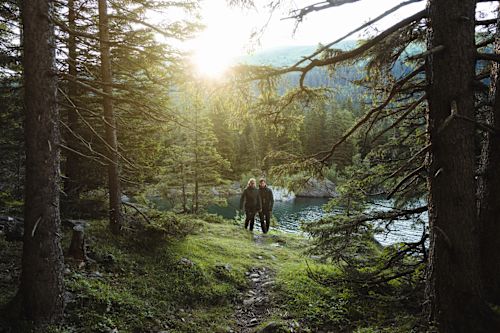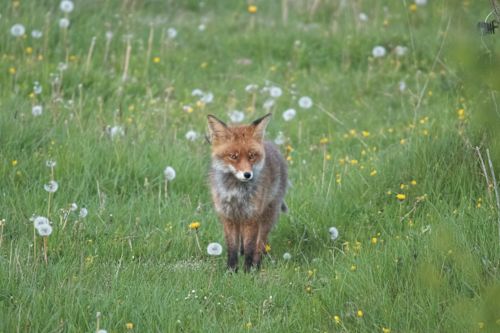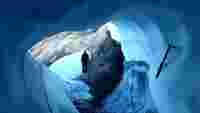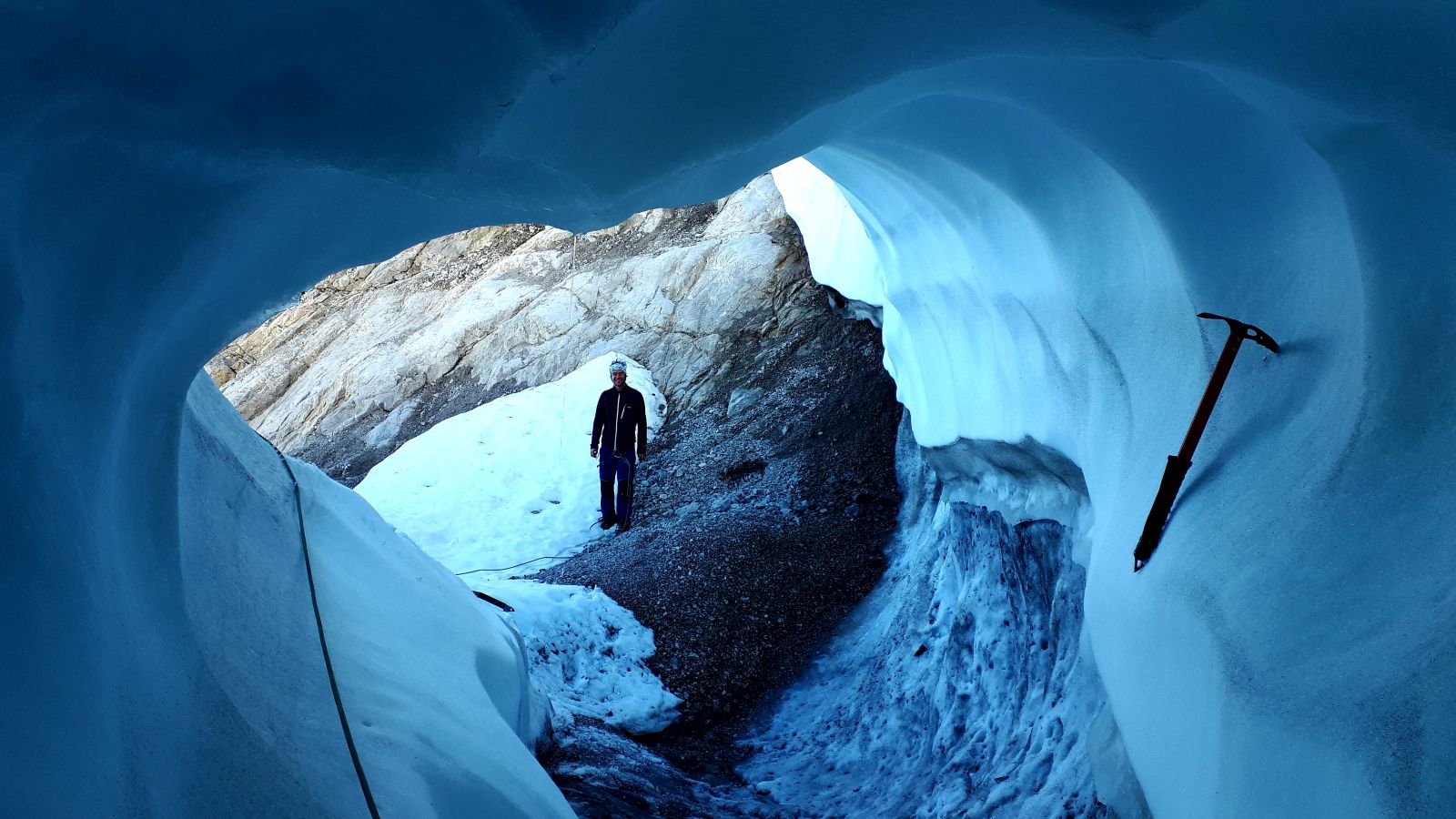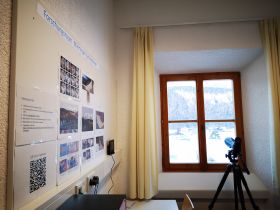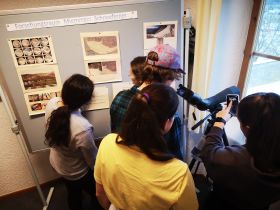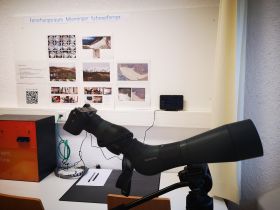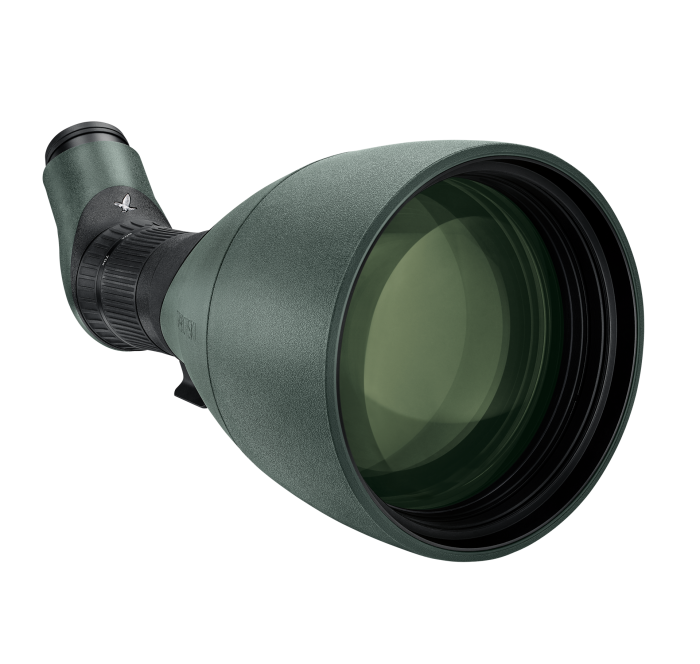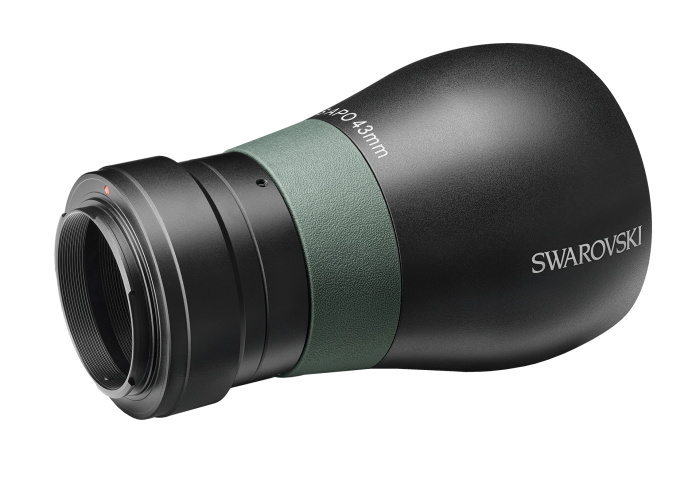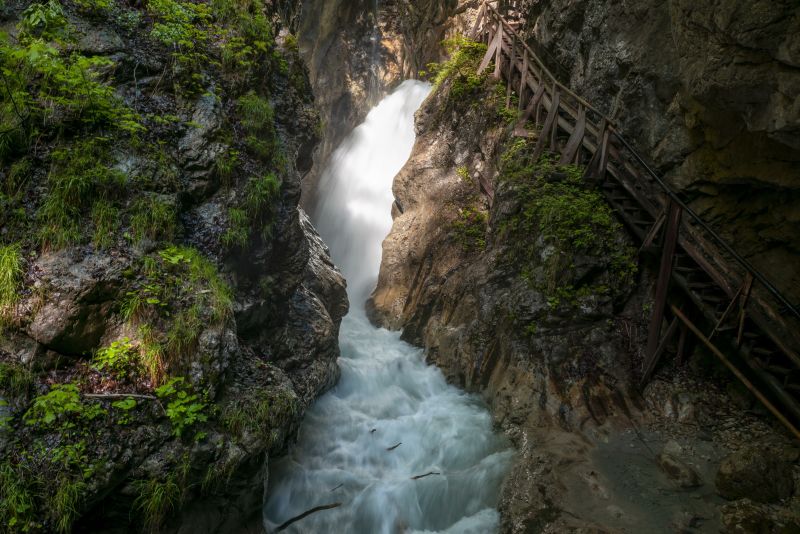Note: This article is written from the perspective of the Meinhardinum high school in Stams, Tyrol.
What picture do you have in mind when you think about a glacier? A huge mass of ice winding along a deep valley flanked by high mountains? A polar ice shield spreading over the coast and calving icebergs? True, these are highly impressive images most of us have seen numerous times. But sometimes we should focus on our surroundings and we will be surprised about what we find.
Austria and especially the state Tyrol are known for their glaciers, which do not only add to the iconic picture of the Alps but are also a touristic highlight in winter and summer alike. Of the 92 glaciers documented in the yearly reports of the Austrian Alpine Club, only few are situated below 2,500 m. This fact can easily be explained as glaciers only exist where more snow accumulates over the course of a year than melts away. This is mostly true for high rising areas in the Central Alps. But there are also exceptions like the Mieminger Schneeferner which has been continuously observed now for three years by teachers and students of the Gymnasium Meinhardinum in Stams with the help of a SWAROVSKI OPTIK spotting scope. But let’s start from the beginning.
Everybody knows the “Fish”
The observed glacier is situated in the Mieminger Kette north of the Inn valley. Even though seven summits reach more than 2,700 m, this mountain range is rather low compared to the nearby Central Alps south of the river Inn and it certainly isn’t famous for its glaciers.
Generations of students of the Gymnasium Meinhardinum in Stams have been looking out of their classroom windows making out a snowy patch in the mountain range Mieminger Kette all year long, which is affectionately called the “Fish”. In some years the distinct shape was easily spotted, in other years it could hardly be seen. Nevertheless, the Fish has always been a prominent feature of the Mieminger Kette. Most people regarded it as a patch of snow, some others were convinced that this was a tiny glacier. In 1993, Michael Kuhn of the University of Innsbruck, published his findings and declared the Mieming Schneeferner as an avalanche-nurtured kettle glacier. (Kuhn, M. (1993): Der Mieminger Schneeferner, ein Beispiel eines lawinengenährten Kargletschers. Zschr. für Gletscherkunde und Glazialgeologie, Bd.29, H 2, 153- 171.)
First long-term records have been produced by Werner Schwarz, a retired teacher of the Meinhardinum, who regularly photographed this glacier. From 2019 onward, the glacier was observed thoroughly in the course of a school project led by Irina Mantl und Stefan Mantl, supported by Florian Westreicher of the University of Innsbruck.
In March 2020, the COVID-19 pandemic sadly interrupted the observations conducted by the students. However, continuous photographic observation still goes on today. Five onsite visits further document the yearly changes of the glacier.

Preparations
In October 2019, Stefan Mantl, Hannes Riser, Doris Riser and Elias Riser paid two visits to the glacier equipped with crampons, climbing gear and spray cans. The aim was to mark the rock with luminous paint which can be seen from our observation point at school. On four different locations the rock was marked: Sites A-D lie just above the ice edge and are the lowest part of the rock face to be seen from Stams in October 2019. Sites A’ to D’ are 5 meters above A-D. On site D further three markings were placed, each 5 meters above the one below. Using a SWAROVSKI OPTIK ATX spotting scope these marks can be observed from school, roughly 8 kilometers away.

Citizen Science at school
In November 2019, a citizen science project was launched at the school. The school class 5H installed a research room and started intense observations of the glacier throughout the year. Daily photos were taken and the ongoings on the glacier were documented. Using a research protocol, they observed the daily weather conditions and which markings could be seen through the telescope. Furthermore, avalanches and the forming of crevasses was recorded. Thus, the accumulation processes during winter and the retreat of the snow cover in late spring and autumn could be monitored.
To enhance the quality of photos taken, the Meinhardium was provided with a TLS APO 43mm camera adapter by SWAROVSKI OPTIK. Complemented by a shutter release timer from 2020 onward, this enabled us to produced multiple photos each day also during school holidays (Figure 8). The photographic observation is still ongoing today. Even through the COVID-19 pandemic, which left our school vacated for several weeks, we were able to continuously document the glacier.
Results
Within the past three years, the Mieminger Schneeferner changed its appearance considerably. From a short-term perspective it is very interesting to compare the glacier throughout the year. In winter, huge amounts of snow are accumulated in the upper parts of the glacier which are preserved until late summer, despite its low altitude and south-east exposition. From July (2022) or August (2020, 2021) onward melting continues until late October exposing rubble and glacial ice. A photographic comparison between February (maximum) and October (minimum) 2022 highlights the significant difference in snow cover.
Looking through the photo material, it is clear that not only the glacier surface changed over time, but also a huge decrease in ice mass could be observed within the past three years. Comparing summer pictures of 2020 and 2022, the ongoing deglaciation is clearly visible.
This significant difference can be explained by three factors:
Overall there was not much snowfall throughout the winter 2021-22 compared to the winter before.
In March 2022 a rather huge amount of sand from the Sahara was deposited on the glacier, which accelerated the melting in spring and summer.
Furthermore, air temperatures from May to August 2022 and again in October were exceptionally high compared to the past two years.
The magnitude of ice retreat is also shown in the following picture (left). The lines show the markings placed in October 2019, 2021 and 2022 on the edge of the ice. This comparison highlights the huge difference in ice loss between 2019 and 2021 and the ice loss between 2021 and 2022. The extent can also be seen on the following picture (right) with an average-sized man as scale.
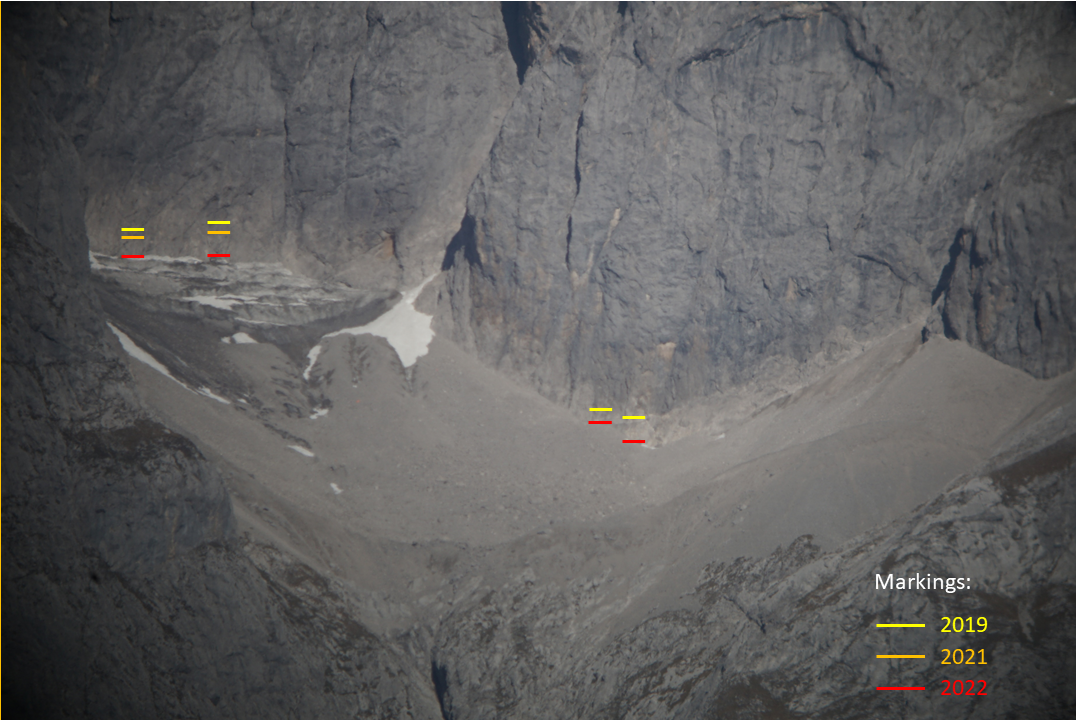
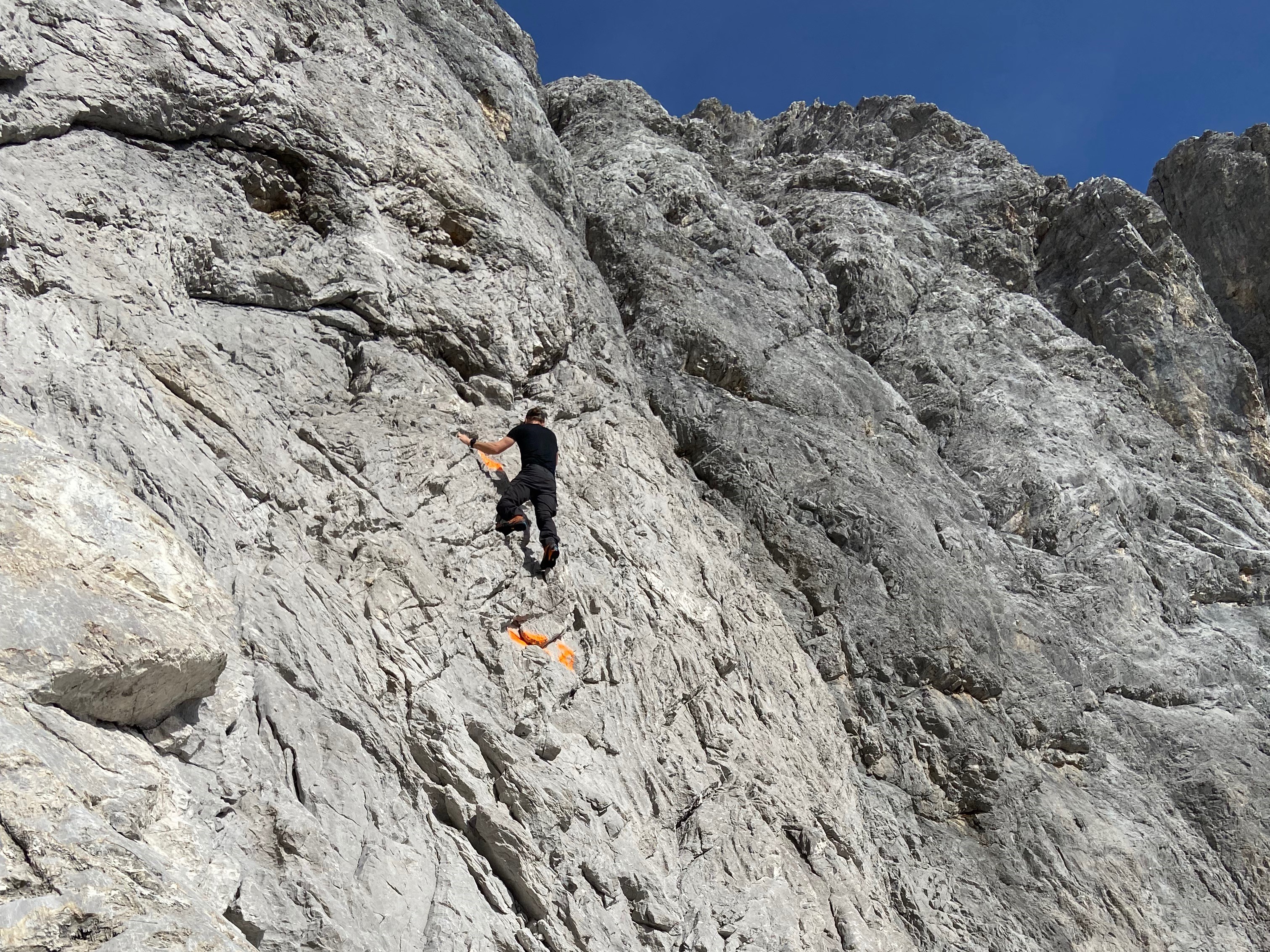
The winter 2022-23 was characterized by high temperatures and hardly any precipitation. Even though the major accumulation time was observed between January and March, it was doubtful that as much snow as in the previous years will keep the glacier from melting away further in summer 2023. Ongoing photographic documentation will provide us more insights.
The results of the observations are regularly published on the Meinhardium school website (www.meinhardinum.at/gletscher) and in the Spektrum, the official yearbook of the Meinhardinum.
Copyright note: All pictures and results are the property of Irina Mantl and Stefan Mantl. This work is licensed under a CC-BY-NC-ND 4.0 license.

